On the Road – Washington DC
Celebrating a Nation of Heroes
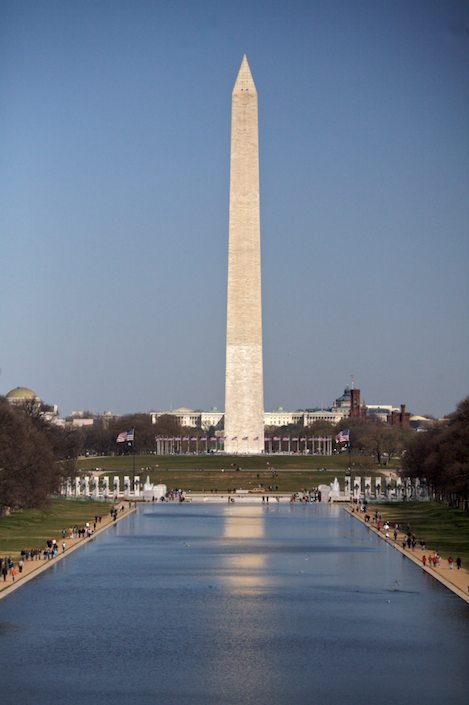
When French-born architect Pierre L’Enfant was appointed by George Washington to design a new federal capital in 1791, he envisioned a grid that featured a corridor running along Pennsylvania Avenue from the White House to the Capitol. Off this would be a series of diagonally intersecting avenues named after the states of the Union. At each of the intersections grand circles and plazas would be carved out with statures or other monuments to notable heroes of the Independence, Revolution War and the nation’s founding.
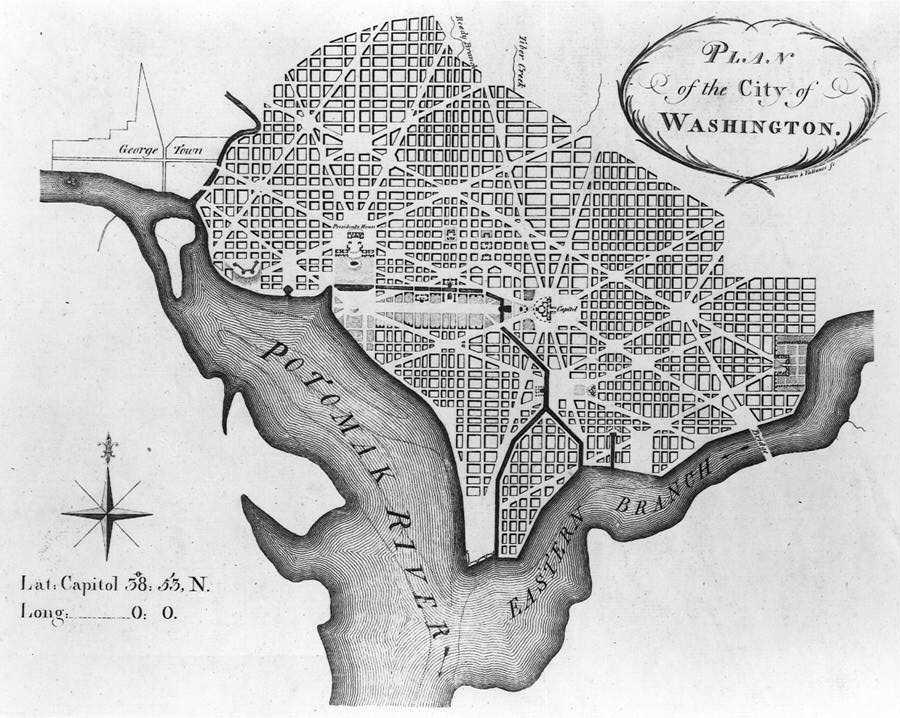
In the midst of this grid would be what he called the “grand avenue” laid out on an east-west axis from the Potomac to the Capital, what would eventually become the National Mall. However, being both temperamental by nature and stubborn in his insistence that his plans be accepted in their entirety, he was dismissed and never received any payment for what he considered one of his greatest achievements.
It wasn’t until 1902 when a city beautification movement swept the city that L’Enfant received recognition for his work. As Washington DC approached its centennial, President McKinley proposed the creation of a committee composed of distinguished architects to look into the development of a National Mall along on the grand avenue envisioned by L’Enfant.
At the instigation of the French ambassador, his designs received formal recognition and in 1909, after a ceremony at the Capitol Rotunda, L’Enfant’s remains were reinterred in Arlington National Cemetery on a hill overlooking the city that he had so proudly designed.

From his resting place just in front of General Robert E. Lee’s mansion on the hilltops of Arlington Cemetery, the view towards the National Mall is perfect. Looking across the Potomac, the Washington Monument marks the center point of the Mall. Though it hasn’t always been a place of beauty, and at points in time marred by swamps, railroad lines, slums, it is now the resting place of heroes, the giants of our nation’s history and the memorials to those who have fought and died to preserve it.
Curiously, in a city dominated by the power of politics, from a visitor’s standpoint it is a remarkably apolitical place. Though the White House, Capitol Building, and Supreme Court are within a half hour’s walk from any part of the Mall, there is little one can experience of what goes on inside, especially after 911. Judging by what I see on the national news channels and the impacts to the world of decisions being made behind the walls that are just a handful of yards away, it almost feels like there ought to be a hum coming from them, like the sound you here when standing too near high tension power lines.
Still, it is a wonderful city to visit. On my trip east I’ve had the opportunity to experience much, but there is no place that concentrates what it means to be America than here. The art museums, Smithsonian, memorials – the sense of being close to the place where such momentous decisions have been made over the past several centuries – is breathtaking.
On our first trip, Yvonne and I stayed not too far away from the Lincoln Memorial, just off Dupont Circle. Coming from Santa Barbara with a three hour time differential, though it was past 6 p.m. by the time we’d settled into our hotel, we were not only wired but ready to head out. Three blocks later we were walking by the State Department headquarters and not too long after that crossing Constitution Avenue and walking up the steps to the Memorial. I’ve discovered since that it is difficult to have place such as this to ourselves but at dusk the crowds were minimal.
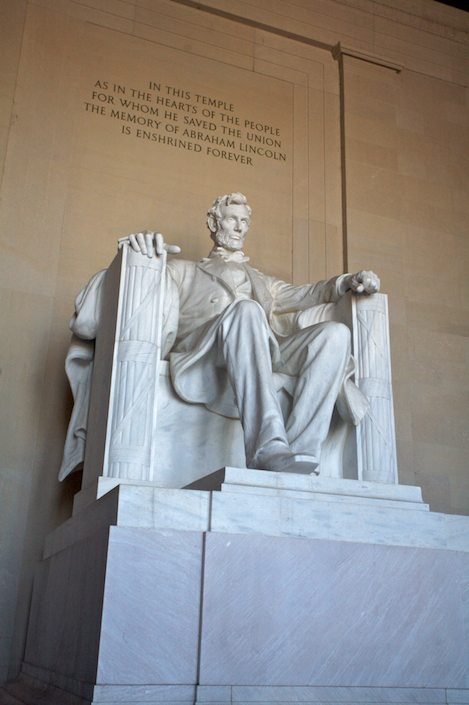
Lincoln sits there, hands resting on each side of the tall chair from which he looks out, eastward, towards the Washington Monument and beyond to the Capitol Building, a look in his eyes that appears to capture the pain of what the Civil War has cost the nation and to himself, personally. Several days later we came back early at 6 a.m. to watch the sun come up at Lincoln’s Memorial.
Surprisingly, there was no one else there save a custodian cleaning up some of the previous night’s debris. Having Lincoln to ourselves for a few minutes was special. There was something comforting to knowing that Lincoln not only begins each day fully bathed in the sun’s glow (at least on the sunny days) but is set such that he gazes out on the full expanse of what L’Enfant envisioned in the 1790s.
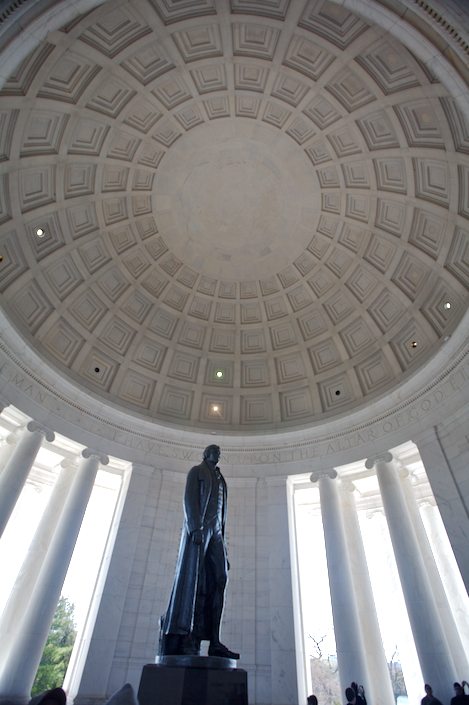
The Jefferson Memorial is equally impressive, set on the south side of the tidal basin, he gazes steadily across towards the Washington Monument and beyond that the White House. His pose is far different than that of Lincoln – more than of a man with a grand vision of what the country might become.
As author of the Declaration of Independence, Jefferson helped set the nation on a course towards what Barack Obama has called a more perfect union – one that cost Lincoln his life as well as thousands of others – both military and civilian. As the president who commissioned the Lewis and Clark Expedition and president over the Louisiana Purchase, he also led the nation in its westward expansion.
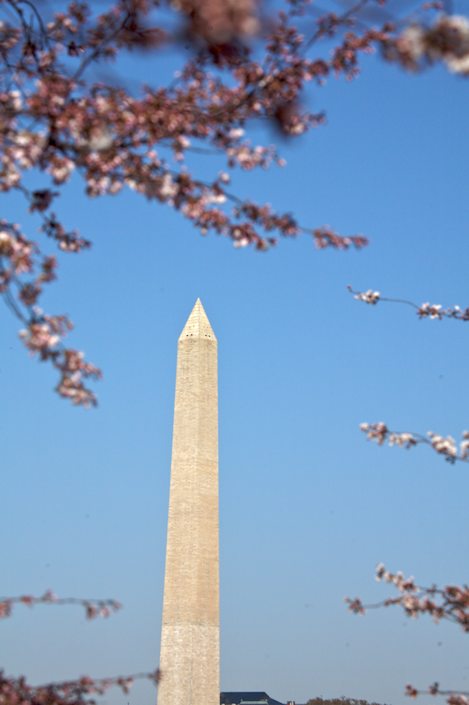
Over the next few days we walked everywhere, taking in a different bit of Washington each day, but always with the ever present sense of these giants surrounding us. There are many things to see in Washington DC, but it is these memorials and the memories of being in their presence I will remember most.



